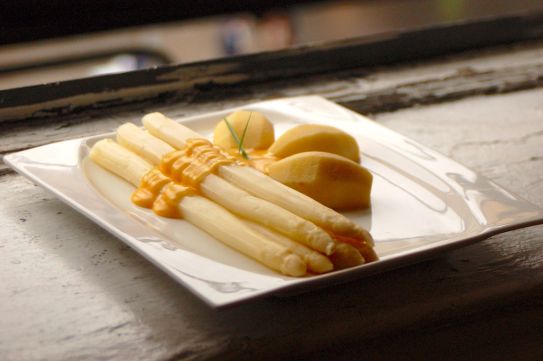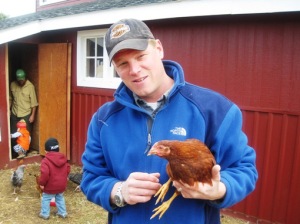Bread belongs to humans the way the moon belongs to the earth. It is locked in our gravitational grasp, ever-revolving around us. We have a 30,000-year-strong relationship with this grainy babe. It morphs its way into every culture to suit the cuisine, be it delicate and flat, voluptuous and flakey, or grainy and dense. It will sneak its way into any meal regardless of the time. It is our go-to fare, and the most consumed food on our planet. For something our entire race seems to worship, an almost transcendental divinity, bread is not universally handled with the grace and reverence it deserves. I find that my beloved wheat product of choice, the flour tortilla, is a perpetual victim of this crime.
The widely distributed conventional bread products in our country are laden with additives, preservatives, and chemically created ingredients. While these sacrifices help extend shelf life and boost profit margins for companies, they can vastly compromise flavor and nutrition for the rest of us. There are honest alternatives out there, though it requires you to be an informed consumer in order to navigate labels and scope out swindles. My great dilemma is that I am unable to unearth a brand of tortillas that satisfies my high flavor standards and isn’t packed with rubbish.
Think you can avoid this pitfall by snagging the whole-wheat pack off the shelf? It’s not that simple. Take the top three tortilla manufacturers in America: Mission, ChiChi’s, and Tyson’s ‘Mexican Original’. All three ingredient labels for the whole-wheat tortillas reveal roughly thirty ingredients (a traditional tortilla takes five). In the short story on the rear of each package you will find several preservatives, dough conditioners, and trans fats (hydrogenated oils). None of these alone are that hugely detrimental to your health, but the disgusting, rotten cherry on top is they don’t even taste good.
You’ve got to pick your battles in this world. While I wish I could bake all of my loaves, rolls, and flat breads fresh, I don’t have that luxury (I’m not a housewife from the 40’s you know!) My big bread crusade is making all my tortillas from scratch. It’s not as difficult as you think and boy, does it pay off.
Whole Wheat Tortillas
Makes 10-6” tortillas
2 cups flour (I use a 50/50 blend of 100% whole-wheat flour and unbleached all-purpose flour)
1 teaspoon salt
1 ½ teaspoons baking powder
¾ cup warm water
2 teaspoons olive oil
Equipment:
Medium mixing bowl
Whisk
Liquid measuring cup
Large cutting board or butchers block
Rolling pin
Non-stick pan
Spray oil
- Combine dry ingredients in a medium mixing bowl and whisk to incorporate. Combine warm water and oil in a liquid measuring cup.
- While mixing flour, slowly add liquid ingredients.
- When dough begins to come together, start kneading with flour covered hands.
- Knead for five minutes adding a small pinch of flour when dough becomes too sticky.
- Form dough into a tight ball and cover with a moist paper towel. Let rest for twenty minutes to relax the dough. (When ready, you will be able to poke a ditch in the dough without it springing back into place.)
- Divide the dough into 10 equal parts (like a pie) using a knife or bench scraper.
- Roll each piece into a smooth ball. Cover all dough balls with a moist paper towel and let rest for ten minutes.
- Shower a thin layer of flour onto a large cutting board and cover your rolling pin in flour. Roll each ball into a flat circle, turning the dough when necessary to make the tortilla even. Set rolled tortillas aside on a plate divided by wax paper or paper towels. Wait five minutes and re-roll each tortilla until a desired thickness is reached.*
- Heat a non-stick pan over medium heat. Coat with spray oil and place one tortilla in the pan. Spray the top of the tortilla with spray oil. Cook for thirty seconds then flip and cook for thirty more seconds. Repeat for all of the tortillas. Serve immediately or keep warm on lowest heat setting in the oven.
*Note: The more you allow the dough to rest, the less elastic and easier it will be to work with.
These tortillas are perfect for wrapping, rolling, stuffing or dipping. Try the Tacos de la Tierra for an earthy twist on a traditional favorite. The soft and salty mozzarella cheese marries the sweet crunch from the peppers and onions perfectly with the savory bite of shiitake mushrooms. Enjoy these with some fresh salsa or hot sauce for an extra zing.
Tacos de la Tierra
Serves 2
1 tablespoon olive oil
1 small Vidalia onion, thinly sliced
1 fire-roasted red bell pepper (pimento), thinly sliced
1 clove of garlic, minced
½ teaspoon chili powder
¼ teaspoon black pepper
1 cup black beans, rinsed
Spray oil
½ cup shiitake mushrooms, thinly sliced
⅛ teaspoon salt
6 oz part-skim mozzarella cheese, grated
- Heat a large sauté pan on high. Add olive oil and onions and lower flame to medium. Sauté onions for seven minutes stirring occasionally.
- Add pimentos and garlic to pan and sauté for another two minutes.
- Add spices and black beans. If veggies stick to pan, add a tablespoon of warm water. Cook for five minutes. Turn off heat and set aside.
- Heat a small sauté pan and coat with spray oil. Add shiitake mushrooms and sauté for five minutes or until browned. Sprinkle with salt. Set aside.
- Heat oven to broil. Load a sheet pan with tortillas, fill with beans and veggies, and top with grated cheese. Broil for two minutes or until cheese is melted. Remove tacos, top with shiitakes and serve.
Further Reading:
Additives/preservatives in our bread supply: http://organic-center.org/reportfiles/Part1_YourDailyBread.pdf
Trans fats (hydrogenated oils): http://www.mayoclinic.org/diseases-conditions/high-blood-cholesterol/in-depth/trans-fat/art-20046114










